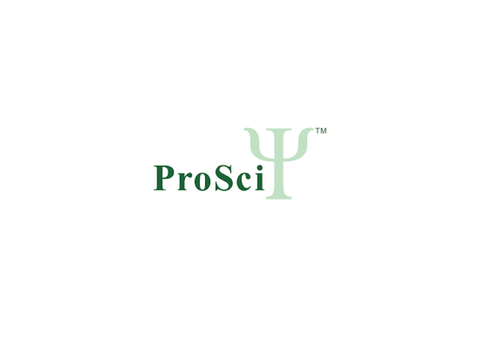Product Description
IL-33 Antibody (biotin) | 38-193 | ProSci
Host: Rabbit
Reactivity: Human
Homology: N/A
Immunogen: Produced from sera of rabbits pre-immunized with highly pure (>98%) recombinant hIL-33 (human IL-33) . Human IL-33 specific antibody was purified by affinity chromatography and then biotinylated.
Research Area: Immunology, Chemokines & Cytokines, Antibody Pairs
Tested Application: E, WB
Application: ELISA:
Sandwich:
To detect hIL-33 by sandwich ELISA (using 100 μL/well antibody solution) a concentration of 0.25 - 1.0 μg/mL of this antibody is required. This biotinylated polyclonal antibody, in conjunction with our polyclonal Anti-Human IL-33 as a capture antibody, allows the detection of at least 0.2 - 0.4 ng/well of recombinant hIL-33.
Western Blot:
To detect hIL-33 by Western Blot analysis this antibody can be used at a concentration of 0.1 - 0.2 μg/mL. Used in conjunction with compatible secondary reagents the detection limit for recombinant hIL-33 is 1.5 - 3.0 ng/lane, under either reducing or non-reducing conditions.
Specificiy: N/A
Positive Control 1: N/A
Positive Control 2: N/A
Positive Control 3: N/A
Positive Control 4: N/A
Positive Control 5: N/A
Positive Control 6: N/A
Molecular Weight: N/A
Validation: N/A
Isoform: N/A
Purification: N/A
Clonality: Polyclonal
Clone: N/A
Isotype: N/A
Conjugate: Biotin
Physical State: Lyophilized
Buffer: N/A
Concentration: N/A
Storage Condition: IL-33 antibody is stable for at least 2 years from date of receipt at -20˚C. The reconstituted antibody is stable for at least two weeks at 2-8˚C. Frozen aliquots are stable for at least 6 months when stored at -20˚C. Avoid repeated freeze-thaw cycles.
Alternate Name: DVS27, IL1F11, NF-HEV, NFEHEV, C9orf26, RP11-575C20.2, NFHEV, Interleukin-33, Interleukin-1 family member 11, IL-33
User Note: Centrifuge vial prior to opening.
BACKGROUND: IL-33 is a cytokine which belongs to the IL-1 superfamily, and it induces helper T cells to produce type 2 cytokines. This cytokine was previously named NF-HEV 'nuclear factor (NF) in high endothelial venules' (HEVs) , as it was originally identified in these specialized cells. IL-33 mediates its biological effects by interacting with the receptors ST2 and IL-1 Receptor Accessory Protein, activating intracellular molecules in the NF-kappaB and MAP kinase signaling pathways that drive production of type 2 cytokines (e.g. IL-4, IL-5 and IL-13) from polarized Th2 cells. The induction of type 2 cytokines by IL-33 in vivo is believed to induce the the severe pathological changes observed in mucosal organs following administration of IL-33.
 Euro
Euro
 USD
USD
 British Pound
British Pound
 NULL
NULL












